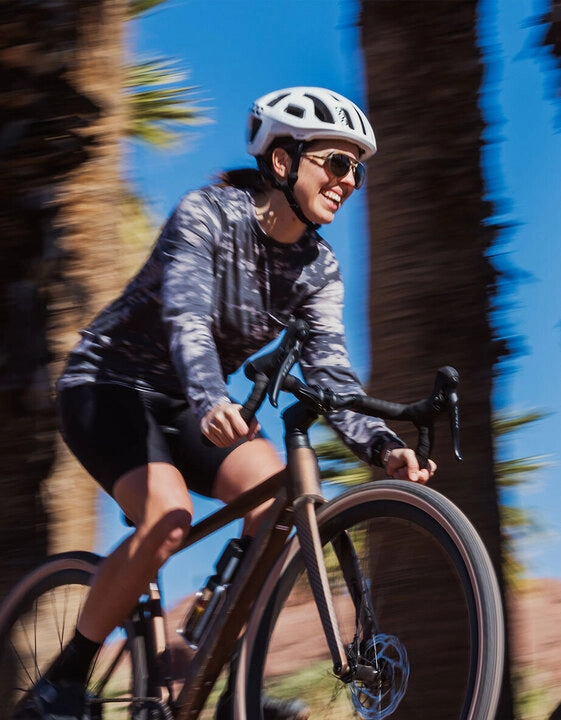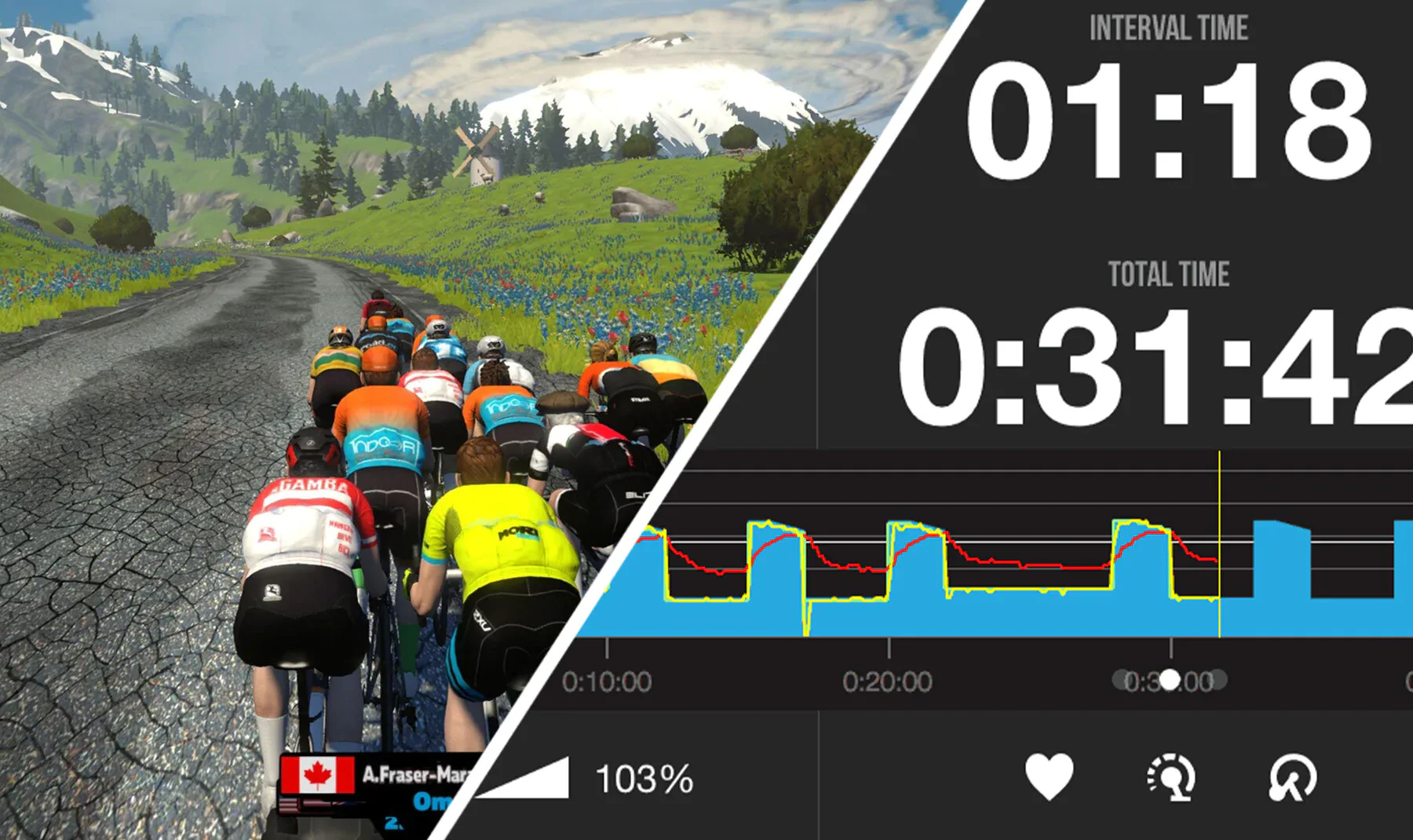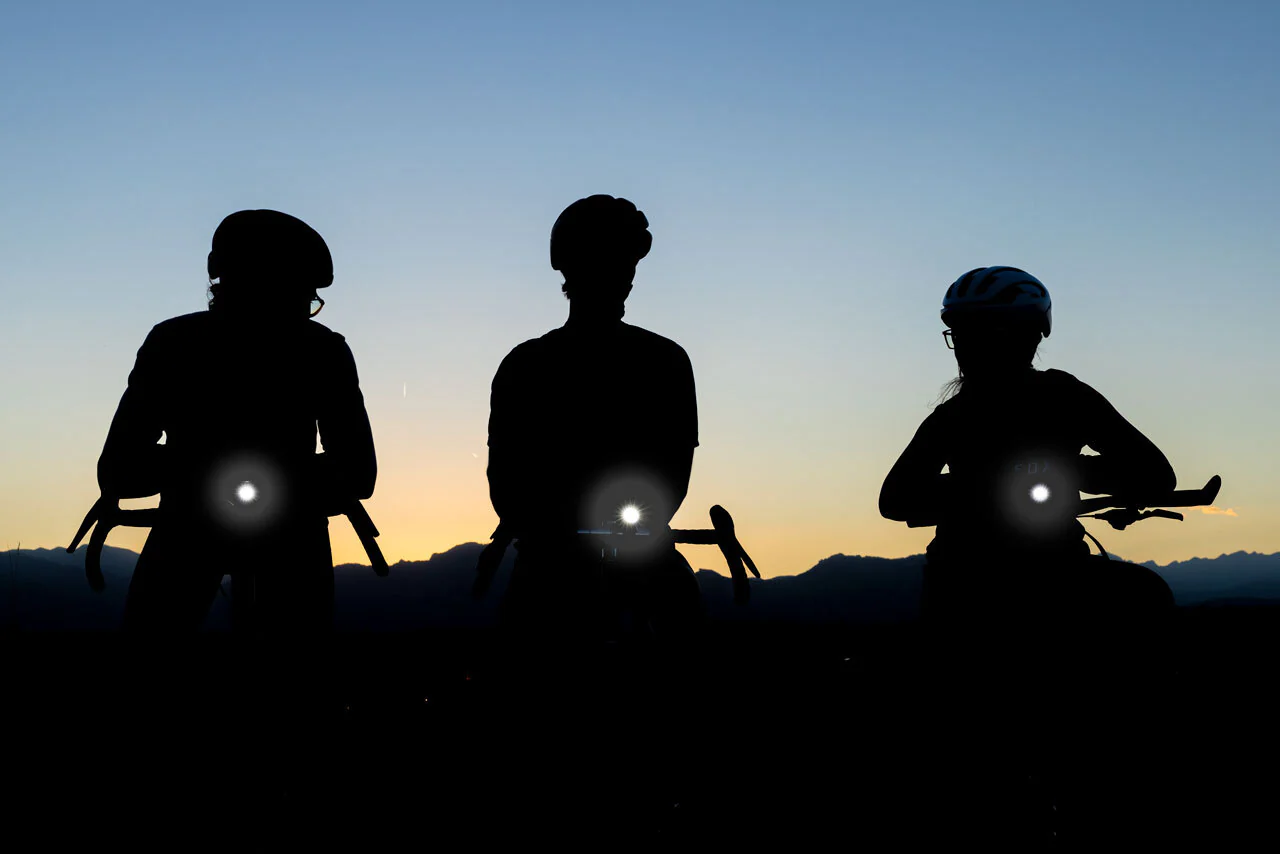Mountain bike suspension is simple… Wait, actually, no it’s not, especially when we’re talking about rear suspension. There are so many different designs that most riders can’t name (let alone explain) them all. So what do developing mountain bikers need to know?
Don’t worry, there’s no studying necessary here because this post isn’t going to be some engineering class. Instead, the goal is to just give you a basic understanding of the most popular suspension systems you’ll encounter when shopping for a new or used mountain bike.
We'll explain the key characteristics of the top 7 suspension designs we commonly see. You might even be able to see a bike pass on the trail and say, “That bike has X suspension.” Your friends will be so impressed… Maybe.
[button]Shop Mountain Bikes[/button]
What Is the Best MTB Suspension Design?
 Before we get started, “Which suspension is best” seems to be the top question that most of our customers want answered when they ask our Ride Guides about different mountain bike suspension designs.
Before we get started, “Which suspension is best” seems to be the top question that most of our customers want answered when they ask our Ride Guides about different mountain bike suspension designs.
The simple answer is that modern suspension designs are all actually pretty good. The more nuanced answer is: It depends.
Yes, those aren’t very satisfying answers. But really, it’s kind of an unanswerable question. (Disagree? Let me know what suspension you think is best!) If there really is ONE suspension design that is superior to the rest, then most bikes on the market would probably already be using it.
Every suspension design is trying to achieve the same thing: improve comfort and increase traction. There are other considerations too: pedaling efficiency, impact absorption, stiffness, weight, cost, reliability, and maintenance. Then, it all needs to fit within the constraints of a bike frame. There’s actually a lot of overlap between many suspension designs, and the reason multiple designs exist is that bike designers have found multiple ways to achieve similar results.
Where the true differences lie is in the mysterious world of suspension kinematics. You may have heard of things like leverage rate, anti-squat, anti-rise, and axle path (scroll to the bottom if you need a glossary). Regardless of the suspension design, these are the things that actually have the most influence on the ride characteristics of a particular bike.
This means it’s hard to make blanket statements about a particular suspension design (though we’ll try), and there’s often no major reason to prefer one design over another. It all depends on the kinematics of a particular bike.
If you want to dive into the nitty-gritty details of suspension kinematics, then you better be ready to study. My favorite resource for examining and comparing suspension kinematics for specific bikes is Antonio Osuna’s Linkage Design blog. It’s a Spanish site, so it’s written in Spanish, but fortunately, most modern browsers can easily translate his findings.
However, if you just want to know the basics of what suspension designs are out there, let’s take a look at the 7 most common and popular designs…
1. Single-Pivot

- How To Identify It: There is only one suspension pivot
- Pros: Simple, easy to service, consistent feeling
- Cons: Harder to tune and refine specific suspension characteristics
- Examples: Starling Murmur, Any Orange MTB
As the name implies, a single-pivot suspension has only one pivot point. Because of this, it is the simplest suspension design. The rear axle is connected directly to the front triangle by a swing arm, and the rear shock is connected directly to the swing arm.
Simplicity is a single-pivot’s greatest strength. Because there’s only one pivot point, there are fewer moving parts and bearings to maintain. It’s why single pivots are so popular for British brands like Orange and Starling. When you live somewhere with lots of rain and mud, less maintenance is a good thing.
Because the rear axle moves in a constant arc, centered around the pivot point, single pivots also feel very consistent throughout their travel. But this points to one of the main shortcomings of the design — it gives designers less control over the leverage rate of the suspension, as well as important kinematics like anti-squat and anti-rise. This means single-pivot bikes might not feel as refined in super rugged terrain as more complicated designs.
2. Linkage-Driven Single-Pivot / Flex Stay

- How To Identify It: The rear axle is connected directly to the main pivot on the front triangle
- Pros: More freedom to tune the leverage rate to work with different shocks and riding styles
- Cons: More pivots and bearings than single-pivot, still less tuneable than other designs
- Examples: Evil Offering, Kona Process, Trek Supercaliber, Specialized Epic Evo
In a linkage-driven single pivot, the rear axle is connected directly to a single pivot on the front triangle, just like a regular single pivot. However, the suspension will use additional linkages and pivots to drive the rear shock. This gives designers more freedom to manipulate the leverage curve to work with particular shocks (e.g., high-volume air or coil shocks) or for particular riding styles (e.g., XC or enduro). While it’s more tunable than a straight single pivot, it still might not be as tunable as more complicated designs.
 The Transition Spur is a linkage-driven single pivot using a carbon flex stay instead of a pivot. Photo: Transition Bicycle Company
The Transition Spur is a linkage-driven single pivot using a carbon flex stay instead of a pivot. Photo: Transition Bicycle Company
In recent years, linkage-driven single pivots with “flex stays” have become popular for more XC-oriented full-suspension bikes (e.g., the Trek Supercaliber). Flex stay designs rely on flex in the seatstays of the rear triangle instead of a pivot to achieve the desired suspension characteristics. This makes the rear suspension simpler and reduces weight.
A linkage-driven single pivot might be easy to mistake for a more complicated suspension design, but it is easy to identify because the rear axle will always be connected to the main pivot by a solid swing arm. Evil’s Delta suspension system is a great example. It looks complex with lots of extra links, pivots, and bearings driving the shock, but ignore those and you’ll see that it’s still just a swingarm moving on a single pivot point.
3. Horst Link / 4-Bar / FSR

- How To Identify It: The characteristic pivot on the chainstay, just in front of the rear axle
- Pros: Highly tunable and predictable feeling suspension characteristics
- Cons: Anti-squat and pedal kickback are directly related there may be some compromises
- Examples: Specialized Stumpjumper EVO, Canyon Strive, YT Jeffsy, Transition Patrol
The Horst link is one of the most common suspension designs on the market, and it’s been around for decades. Its inventor, Horst Leitner, began working on it in the mid-1970s for motorcycle suspension, and he built a prototype mountain bike using a "Horst link" in 1985.
Horst Link is also known as 4-bar suspension (referring to the fact that it’s essentially a four-bar linkage). Many Specialized bikes throughout the year, like the current Stumpjumper EVO, use FSR (Future Shock Rear) which is just a Horst link Design.
These days, Horst link designs are mostly used on mid- to long-travel trail and enduro bikes designed for gravity-oriented riding. Horst links provide great sensitivity and generally feel very predictable.
Horst link bikes are easy to identify because they incorporate a pivot on the chainstay directly in front of the rear axle. This means the rear axle is not directly connected to the main pivot, allowing designers to tweak the axle path to suit their needs. This gives designers a bit more freedom to play with kinematics like anti-squat and anti-rise than on a single-pivot design.
4. VPP / DW-Link / Maestro / CVA / Twin Link / Dual Link

- How To Identify It: A solid rear triangle connected to the front triangle with two short links
- Pros: Extremely tunable for all suspension characteristics
- Cons: Extra complexity and tighter packaging for pivots and bearings
- Examples: Santa Cruz Hightower, Pivot Trail 429, Ibis Ripley, Giant Trance
This suspension system is known by many names. Santa Cruz has its VPP (Virtual Pivot Point) suspension system. Ibis and Pivot have DW-Link. Giant has Maestro. Niner has CVA (Constantly Varying Arc). While these are all different designs, they’re all essentially “twin link” or “dual link” designs. This means they use a solid rear triangle that moves on a pair of short links connected to the front triangle.
Where designs from different brands differ is in the placement of the links, the lengths of the links, and the direction in which they rotate. For example, VVP uses counter-rotating links that turn in opposite directions while DW-Link and Maestro use co-rotating links that turn in the same direction.
 How the rear axle move on Santa Cruz VPP. Photo: Santa Cruz Bicycles
How the rear axle move on Santa Cruz VPP. Photo: Santa Cruz Bicycles
In practice, twin link systems actually work very similarly to Horst link designs. It allows designers to manipulate the axle path separately from the main pivot points and provides many of the same advantages in terms of tuning, sensitivity, and predictability. There’s a huge range in what characteristics can be achieved with twin link systems, which is why they’ll appear on everything from short-travel XC and trail bikes to full-on downhill bikes.
5. High-Pivot Idler

- How To Identify It: An idler pulley on or near the main pivot
- Pros: Rearward axle path for better impact absorption and reduced pedal kickback
- Cons: Extra complexity and drag due to the idler, may require combining two chains
- Examples: Forbidden Druid, Deviate Highlander, Cannondale Jekyll
While there are some exceptions, high-pivot bikes generally use a single-pivot suspension design, but the pivot point is placed much higher than normal. Placing the pivot point higher creates a more rearward axle path, which can help the rear wheel absorb harsh and square-edged hits more effectively.
But because the axle moves backward, it will pull on the chain. This is known as chain growth. It prevents the suspension from moving freely and will cause a sensation known as pedal kickback. The solution is to add an idler pulley which routes the chain up around the pivot point to eliminate chain growth. This prevents pedal kickback, and compared to other suspension designs, it also improves suspension sensitivity.
 Idler pulleys are the defining feature of high pivot suspension designs. Photo: Cannondale
Idler pulleys are the defining feature of high pivot suspension designs. Photo: Cannondale
However, the idler pulley can increase drivetrain drag, noise, and maintenance, and many high-pivot bikes will require you to combine two chains. High-pivot bikes also handle a bit differently than other designs because they like to sit into their travel and stay stuck to the ground. For these reasons, high-pivots tend to be used on longer travel enduro and downhill bikes that focus more on descending than climbing.
High pivot suspension has actually been around since the 90s, but it’s recently experienced a resurgence of popularity in the gravity-oriented side of mountain biking. To dive deeper into why, check out the high-pivot suspension post I wrote after talking to an actual suspension engineer.
6. Split Pivot / ABP / Concentric

- How To Identify It: There is a pivot directly on the rear axle
- Pros: Braking forces don’t affect suspension performance
- Cons: It may not be as efficient for pedaling
- Examples: Devinci Troy, Trek Fuel EX, Orbea Rallon
Like twin link designs, multiple brands use similar suspension designs that incorporate a pivot at the rear axle. Devinci uses Split Pivot. Trek uses ABP (Active Braking Pivot). Orbea uses Concentric. You may notice that the rear axle is directly connected to the main pivot by a solid swingarm, which means these designs are essentially a linkage-driven single pivot. The main difference, of course, is the concentric dropout pivot at the rear axle.
On many suspension systems, using the rear brake can negatively affect the rear suspension’s ability to move. With a Split Pivot, ABP, or Concentric design, the additional pivot at the rear axle allows designers to mount the brake caliper to the seatstay instead of the chainstay, which is beneficial because the seatstays will rotate less around the brake rotor than the chainstays as the suspension moves through its travel.
With this sort of system, the suspension will continue to feel active, providing comfort and traction, even when the brakes are fully applied. This reduces chatter, improves traction, and can give some riders much more confidence on the brakes. For some, the suspension may feel too active, especially when climbing, but it can be controlled with lockouts and compression damping adjustments on the rear shock.
7. Switch Infinity

- How To Identify It: The main pivot moves on a pair of stanchions / It’s a Yeti
- Pros: Good efficiency paired with a supple bottomless feel
- Cons: Proprietary, expensive, not much different from twin-link
- Examples: Yeti SB120, SB140, SB160, etc.
This suspension system is only used by Yeti, but because Yeti’s are so popular, it’s one of the most ubiquitous systems we see. It’s actually not too different from a twin link design, but it does things a bit differently so it’s worth separating out.
Switch Infinity uses a solid rear triangle with an upper link that rotates as the suspension compresses while a lower pivot slides up and down on a pair of stanchions. The lower pivot acts a lot like the lower link on a twin link design, but it moves vertically in a straight line rather than rotating.
 The Switch Infinity stanchions up close. Photo: Yeti Cycles
The Switch Infinity stanchions up close. Photo: Yeti Cycles
On paper, it behaves very similarly to a regular twin link design, but Yeti claims this specific design allows them to tune their kinematics in a certain way throughout the travel. Yetis have a reputation for pedaling efficiently while still having a bottomless feel deep in the travel. With unique Fox Kashima coated stanchions in the frame, Switch Infinity definitely looks cool, and it’s fairly easy to service, but as with any Yeti product, you end up paying a premium.
What MTB Suspension Designs Are Missing?
 The current generation Specialized Enduro uses a unique 4-bar system with 6 links. There are some similar designs (e.g., the Canyon Sender) but this particular one is patented by Specialized.
The current generation Specialized Enduro uses a unique 4-bar system with 6 links. There are some similar designs (e.g., the Canyon Sender) but this particular one is patented by Specialized.
A LOT is missing. As stated in the introduction, this guide only covers the most common and popular designs that we see on the market. There are plenty more, including many designs that are only used by a single manufacturer, but not common enough (for us, at least) to cover them in depth.
One design I skipped over that might be seeing an increase in popularity soon is the 6-Bar suspension system, which we’ve seen on Yeti’s 160E E-Bike (they call it Sixfinity), Commencal's latest Supreme downhill bike (which is also a high-pivot), and the Atherton line-up of bikes (which use DW6). And there are plenty more.
Some Basic Suspension Definitions

MTB suspension leverage curves are generally described as linear or progressive.
Leverage rate / ratio / curve - How much force it takes to compress the rear shock. We talk about leverage as a “rate” or a “curve” because the amount of force needed increases and changes as the suspension moves through its travel. The leverage rate or curve has a big impact on how a bike feels in certain terrain and what shocks can be used.
Anti-Squat - How the suspension is affected by pedaling forces. Anti-squat is basically a measure of how much the suspension resists pedal bob while pedaling. More anti-squat means more efficiency while climbing, but the trade-off can be a reduction in suppleness or an increase in pedal kickback.
Anti-Rise - Sometimes referred to as brake jack. Anti-rise is basically a measure of how much the rear brake affects suspension movement. When you brake, the resulting weight shift want to make the rear suspension rise or extend, but the force from the rear brake compresses the suspension, keeping the bike more level. It’s kind of like anti-squat but in reverse.
Pedal Kickback - As the suspension moves, it can pull on the chain. This is known as chain growth and it causes a sensation called pedal kickback, where the cranks rotate backward. It can feel unpleasant (sometimes even kicking your feet off the pedals) and reduce how sensitive or supple your rear suspension feels.
Axle Path - The path the axle takes as it moves through the travel. It’s usually a curved or “C” shape, but many designs aim to tweak the axle path for performance reasons.
[button]Shop Mountain Bikes[/button]

























